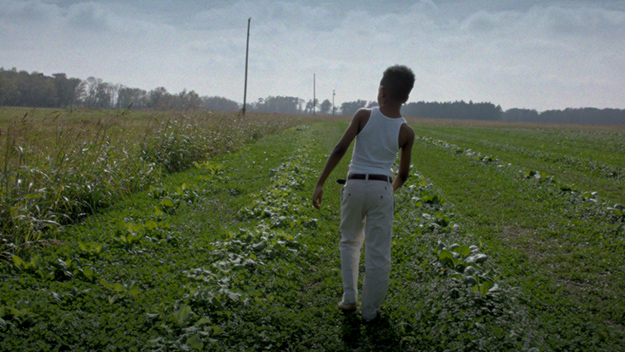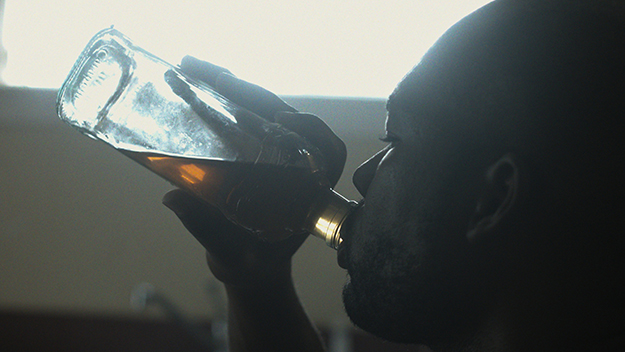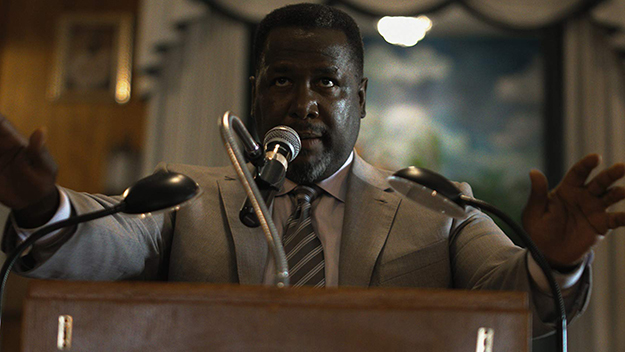Film of the Week: Burning Cane

Images from Burning Cane (Phillip Youmans, 2019)
Burning Cane is the first feature by Phillip Youmans, a writer-director from New Orleans, now aged 19 and studying film at NYU. He completed the film when he was still in high school. That isn’t by any means the most interesting thing to be said about his movie, but neither is Youmans’s precocity something to be overlooked. It’s not just his talent as a filmmaker that’s striking, but also the sense you get that, to have made such a film in his teens, Youmans must have observed life and human behavior in a way that suggests a depth and philosophical maturity rare among filmmakers of any age. Yes, Burning Cane has a certain callowness, perhaps a narrower outlook than a more experienced director might have brought to it; at 77 minutes, it feels a little like an impressionistic short expanded to a length that it just about sustains. But the film also has a rough-edged dynamism and emotional intensity of a sort that often disappear when a filmmaker’s style attains greater refinement.
Set in rural Louisiana, it’s essentially an African-American family story located in a Southern Baptist community like the one in which Youmans himself grew up. The community’s center is the church run by pastor Reverend Joseph Tillman (Wendell Pierce), but at the film’s center—if apparently at the margins of the community—is a middle-aged widow, Helen Wayne (Karen Kaia Livers). It’s her voiceover that we hear at the start—and it’s the clarity and emotional reserve of Livers’s tones that defines this performance as much as anything she does in front of the camera. Helen is talking about a beloved dog that she’s tried, and failed, to cure of the mange, using hydrogen peroxide, borax, cider vinegar, anything that might work. As we see her sitting on her stoop, then walking around her run-down farm, carrying her girth around with a pronounced limp, she seems to carry the world’s weight on her shoulders—and seems the embodiment of the world’s compassion, really empathizing with that dog’s itch. That impression isn’t mitigated by the rough work she makes of hacking a still-feathered chicken with a cleaver. This image shows a messy business and this, together with the mange monologue, suggest a world on the verge of routine everyday chaos, the mess of nature and disorder always liable to creep in, no matter how people strive to maintain order.
Fighting in his own way against disorder is the Pastor. His sermons have a stentorian boom and gravitas, as he inveighs against the temptations of Mammon, embodied by Malcolm Forbes’s tenet that “He who dies with the most toys wins.” The pastor warns his congregation, “No toys get you into heaven.” He speaks the good fight, but back in his car alone, he slugs from his hip flask at the wheel. Meanwhile, Helen’s adult son Daniel (Dominique McClennan), having recently lost his job, worries about living up to the standards of his forebears, notably his dad, who he believes worked till he dropped; not so, says Helen, “AIDS got your daddy.” Daniel spends his days looking after his young son Jeremiah (Braelyn Kelly), or at least in his company. Whether he’s looking after him in any real sense is another question, as their intimate, happy swaying along to Robert Johnson’s “They’re Red Hot” is punctuated by Daniel insistently giving the boy swigs from his whisky bottle. Their constant companion is the TV: whether it’s Disney’s The Jungle Book on a screen eerily suspended in mid-air in pitch dark, or Daniel’s VHS of some ancient porn item.

Jeremiah never speaks, but the film never lets on whether this silence is to be read as a sign of damage. He does have elements of a child’s normal life, though, careering through the house on a scooter, the camera at his back, or out in an orchard, relishing a tangerine fresh from a tree—a brief quasi-Edenic moment, and one of the film’s rare uses of intense color.
Youmans gives us incidents rather than narrative as such. Helen tries to stop a clearly boozy pastor from driving his car; affably refusing to let her drive him, he takes off, leaving her standing in a roadside puddle. Later, inevitably, she’s called in to collect him; back in his home safe and in one piece, he’s seen through a crack of window hitting the drink again. Youmans often likes to let us spy on characters through gaps in doorways, through drawn curtains, through window blinds or shower doors. He likes to withhold information some of the time in his framing and editing (he shot the film himself, as well as co-editing it, with Ruby Kline). Conversely, at other times, he tells us more than we could know by observation alone, taking us right into Helen’s and the Pastor’s heads through their voiceovers.
In another key event, even though we know pretty much what’s happening, the manner of telling makes it both dramatic and mysterious. A dispute between Daniel and his partner Sherry (Emyri Crutchfield) is just beginning to turn nasty when Youmans interrupts the action with a series of abrupt cuts punctuated with holds on black. It’s a similar effect, in visual terms, to another violent episode earlier in the film, remembered in voiceover by Helen; again, we can certainly understand its import, although she tells it in brief disconnected fragments for us to piece together.
What we see in the film is often at odds with what the voiceovers reveal. There’s an extraordinary moment when the sound of the church’s gospel choir is replaced by the Pastor’s inner monologue, at first just a gruff, inchoate muttering; he voices his despair and weariness (“These young people don’t believe a goddam word I’m preaching”), then vents his intolerance at a world he can’t understand, bemoaning boys “wearing dresses when they got a penis between their legs.” Pastor Tillman is a role that could easily have come across as a simplistic contradiction—righteousness in the pulpit, spiritual rot in the heart. But Wendell Pierce brings the role alive partly through his voice—the resounding boom of Tillman’s serious, considered sermons, contrasting with the deep, self-pitying rasp of his monologue—and partly though his physical presence, the patriarchal weight of the severe churchman, neatly dressed like a successful entrepreneur, as if embodying the very appeal of the worldliness he’s denouncing.

Youmans isn’t a showy director, but he appreciates stylistic effect and is able to make it feel organic, low-key, organic: close-ups at table height on Jeremiah, a wide angle stretching the space as Helen and Daniel sit talking. One of his inspirations, he has said, is early Terrence Malick, although you don’t sense it that much. There’s definitely a rural poetry in the opening shots of cane fields, smoke rolling off them in the distance, with gorgeous clouds overhead and a sprinkling of lens flare in the air. These images are beautiful, but the keynote is austerity, as it in throughout. There’s certainly no hint of Malickian mysticism: despite the film’s overt theological content, in the form of sermons, this is very much a drama of worldly experience.
In fact, Youmans’s stylistic signature lies as much in sound as images: TV and radio sound fill the background, in snatches of muffled commercials and sitcoms. He favors decidedly non-current music: that 1930s Johnson song about hot tamales, and the extraordinary “Black Christ of the Andes,” a 1964 religious choral piece by the jazz composer and pianist Mary Lou Williams, its voices swooping eerily in and out of the air, accompanying lights through rain on a car windshield.
In some ways, the style Youmans develops here is as much literary as strictly filmic: the fragmentary narrative has the flavor of super-spare modernist storytelling, of an era contemporary with Robert Johnson himself. Helen’s opening monologue about tending to her dog has the pared-down precision of the modern American short story tradition. It is still taken as gospel in some quarters that voiceover in cinema is a form of cheating, a willful neglect of the imperative to show. But pushing it to the forefront, as Youmans does, is to endorse its value wholeheartedly; while he uses interior monologue to take us right inside a character, he also uses visual language to pull us back and remind us that we don’t know that much after all. The film ends on an image of a character silhouetted on a window blind—a nod to artist Kara Walker’s cut-out figures?—followed by a single decisive sound. We think we know what’s going on, but we don’t—not that clearly. Burning Cane is a film that oscillates tantalizingly between an occasional obviousness or at least familiarity—the poverty/alcohol equation, the preacher’s hypocrisy—and a teasing obscurity. Of a certain key event that we never see, someone remembers: “That’s when things got blurry.” It’s the blurriness of Burning Cane—alongside its confident sharpness—that makes it so distinctive.
Jonathan Romney is a contributing editor to Film Comment and writes the Film of the Week column. He is a member of the London Film Critics Circle.







